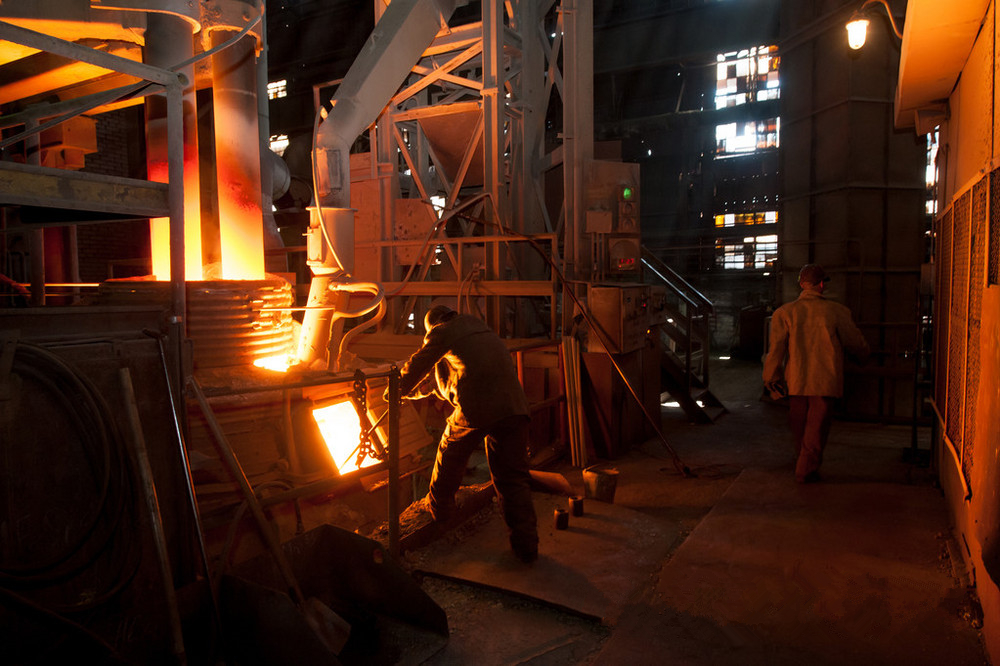Consumption mechanism of graphite electrode
Graphite electrodes are used as conductive materials in electric arc furnace smelting, and their consumption ratios are generated with the consumption of electrical work. Modern electric arc furnace steelmaking uses electrical energy and chemical energy as thermal energy sources to achieve the purposes of four desorption (P, C, O, S), two removals (gas, miscellaneous), and two modulations (temperature, composition) in the steelmaking process The performance of graphite electrodes is mainly reflected in the user’s suitability and consumption, and the consumption of the electrode has a direct relationship with its own quality. The consumption of graphite electrode for electric arc furnaces smelting is mainly composed of the following parts.

1.Consumption of graphite electrode end and outer surface in electric furnace
The arc produced by the graphite electrode in the electric arc furnace is divided into long, medium and short arcs. The melting of the charge and the temperature rise depend on the arc power. The arc length is proportional to the secondary voltage, and is inversely proportional to the secondary current and the heating rate. In order to increase the smelting speed and greatly shorten the smelting time, the high chemical energy operation of forced oxygen blowing is used, which places higher requirements on the oxidation resistance and thermal shock resistance of graphite electrodes. The end consumption of graphite electrodes during smelting includes-sublimation generated in the high temperature of the arc, and chemical reactions in contact with molten steel and steel slag. The oxidation loss of the graphite electrode accounts for about 2/3 of the total consumption. Its oxidation loss is the product of the unit oxidation rate and area and has a proportional relationship with time. The longer the heating time in smelting, the greater the consumption. Therefore, it is installed on the arc furnace electrode. Water-cooled spray systems are necessary. In normal smelting, the carbon content of the graphite electrodeentering the molten steel is generally about 0.01%, and it is normal for the end consumption switch to be non-conical.
2.Consumption of graphite electrodes in smelting
Residual body consumption refers to the non-productive consumption part where the bottom electrode in the smelting is dropped into the furnace for some reason and becomes the final waste product. The generation of debris is not only related to the intrinsic quality of the joints and electrodes, but also the distribution of cloth in the furnace, the atmosphere in the furnace and the operation of power transmission are directly related to the magnetic card. The main appearance phenomena are: “herringbone” cracks and large longitudinal cracks or splits at the bottom end of the debris; the tightness of the joint causes the joint to oxidize and fall off or break; Or the electrode is broken by the external force on the joint or the bottom of the hole; the electrode is broken by the external force by the joint or the meaning of the hole; Severe breakage; poor quality of the electrode itself. This part of the loss under the premise of ensuring the quality of the electrode, the amount produced in normal production is not large, but direct users pay much attention to it.
3.The surface of the electrode is oxidized and peeled off, accompanied by the consumption of rowing and dropping.
In normal smelting production, if the surface of the graphite electrode is uneven or accompanied by peeling and falling off, there is a problem of carbon increase in the molten steel. This phenomenon on the one hand reflects the poor oxidation resistance and thermal shock resistance of the electrode; on the other hand, the horizontal oxygen blowing time is too long or the oxygen blowing amount is too large in the smelting, which causes severe oxygen enrichment in and on the furnace. As a result, the electrode’s peroxidation loss increases; the second is that if there is a serious shedding phenomenon, the problem of the electrode must also be considered. This abnormal consumption is a test of the intrinsic quality and technical service level of the product.
